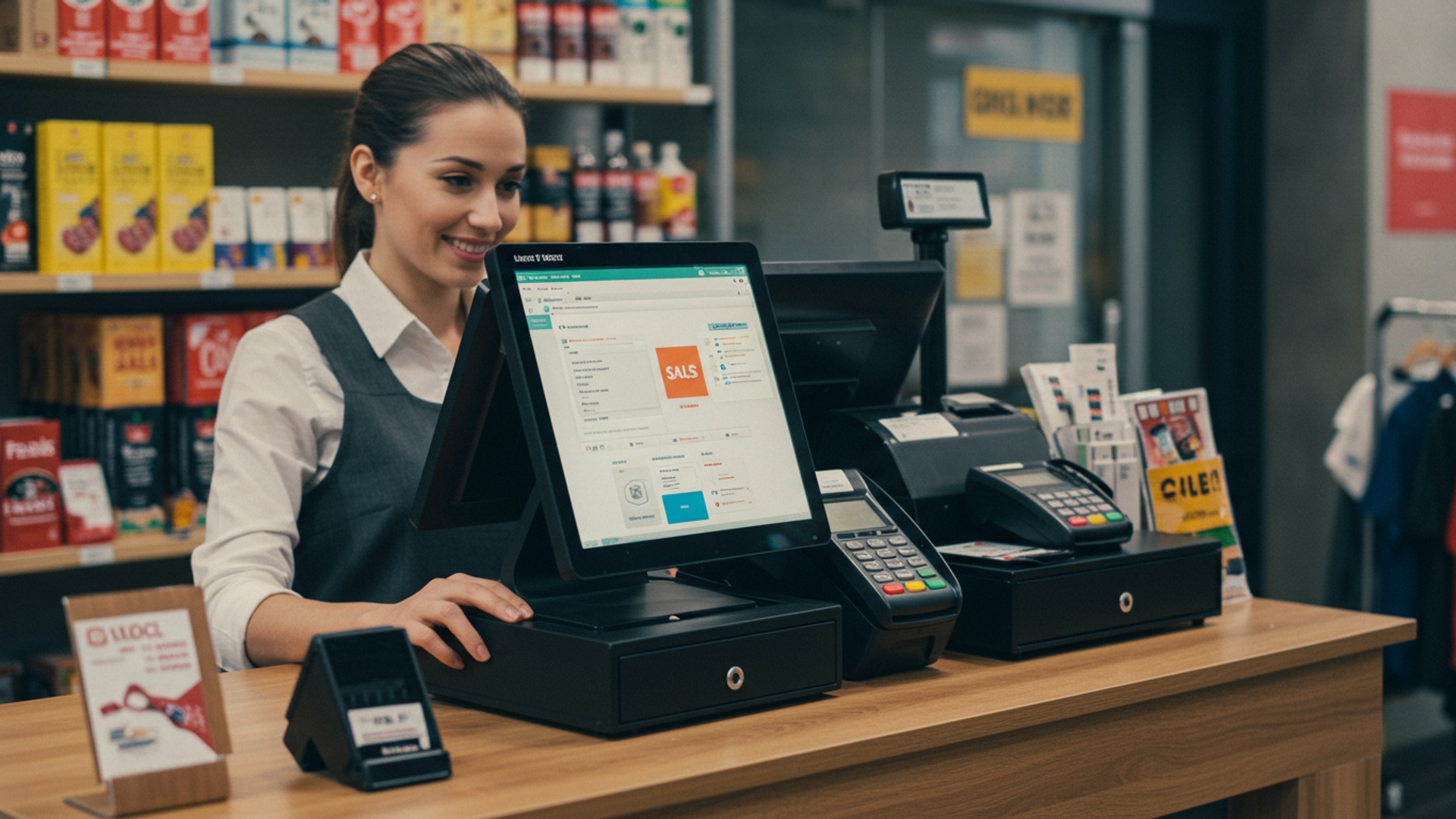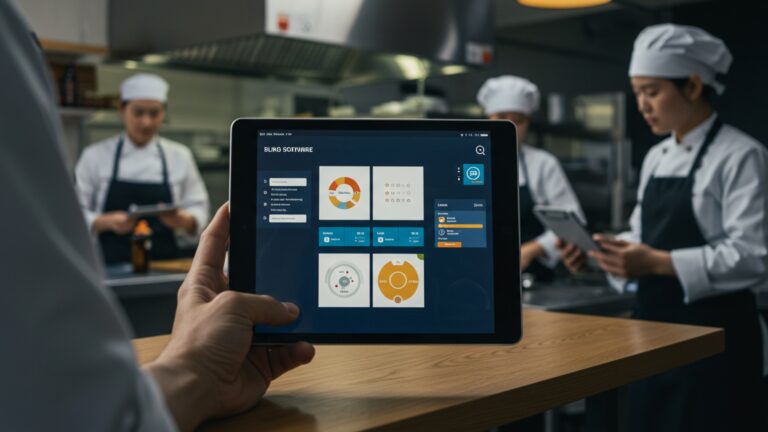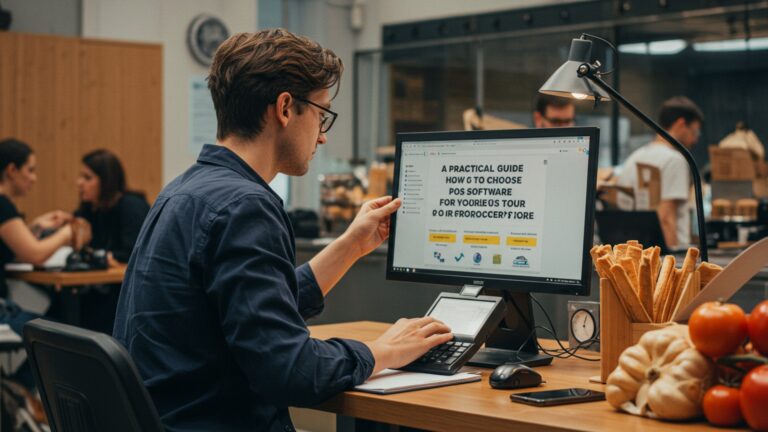Unlock Efficiency How to Choose Top POS Billing Software for Your Business
The modern retail and service landscape demands more than just transaction processing; it requires a strategic engine. Businesses, from bustling cafes to expanding e-commerce operations, are leveraging cutting-edge pos billing software not merely for checkout. as a central nervous system for inventory management, customer relationship building. real-time analytics. With the rapid adoption of cloud-based solutions, integrated omnichannel capabilities. AI-powered insights, selecting the right platform has become a critical differentiator, impacting everything from operational efficiency and employee productivity to customer satisfaction and bottom-line growth. Choosing wisely ensures your business isn’t just surviving. thriving in a competitive, data-driven market.

Understanding the Core of POS Billing Software
In today’s fast-paced business world, efficiency is not just a buzzword—it’s a necessity. For any business dealing with transactions, from a bustling cafe to a large retail chain, the ability to process sales quickly and accurately is paramount. This is where POS billing software comes into play. POS, which stands for Point of Sale, refers to the exact moment and location where a transaction is completed. Essentially, it’s the digital system that records sales, manages inventory. handles customer payments.
Historically, businesses relied on cash registers and manual ledgers, a process prone to errors and time-consuming. The evolution of technology has transformed this, bringing sophisticated POS billing software solutions that automate these critical functions. These systems are no longer just about ringing up sales; they are comprehensive platforms designed to streamline operations, enhance customer experience. provide invaluable business insights.
Consider a small boutique that manually tracks inventory. A new shipment arrives. an employee spends hours updating stock counts. With modern POS billing software, each sale automatically deducts the item from inventory. new stock can be added with a quick scan. This frees up staff to focus on customer service, directly impacting the bottom line. For a restaurant, the software can manage table orders, send commands directly to the kitchen. split bills seamlessly, drastically reducing order errors and wait times.
Key Features Your Business Needs in POS Billing Software
When evaluating POS billing software, it’s crucial to look beyond basic transaction processing. A top-tier system offers a suite of functionalities designed to support various aspects of your business operations. Here are the essential features to prioritize:
- Sales and Transaction Processing
- Inventory Management
- Customer Relationship Management (CRM)
- Reporting and Analytics
- Employee Management
- Integrations
- Security
- Scalability
- User Interface (UI) and Ease of Use
- Offline Mode Capabilities
This is the fundamental purpose of any POS system. Look for intuitive interfaces, quick product lookup, discount application, returns processing. the ability to handle various payment methods (cash, credit/debit cards, mobile payments, gift cards).
Robust inventory tools are vital. They should track stock levels in real-time, alert you when items are low, manage product variations (size, color), handle multi-location inventory. facilitate easy product receiving and transfers.
A good POS system helps you build customer loyalty. Features like customer profiles, purchase history tracking, loyalty programs. targeted marketing capabilities allow you to comprehend and engage with your customers more effectively.
Data is power. The best POS billing software provides comprehensive reports on sales trends, popular products, peak hours, employee performance. inventory turnover. These insights are crucial for making informed business decisions.
Track employee sales, manage shifts, set access permissions. monitor clock-in/out times. This helps streamline payroll and assess staff performance.
Your POS shouldn’t be an island. It should seamlessly integrate with other essential business tools, such as accounting software (e. g. , QuickBooks, Xero), e-commerce platforms (e. g. , Shopify, WooCommerce). third-party payment gateways.
Protecting sensitive customer data and financial insights is non-negotiable. Look for features like PCI compliance, data encryption, secure payment processing. user access controls.
Your business will grow. your POS system should grow with it. Choose a solution that can easily add new terminals, users, or locations without a complete overhaul.
An intuitive and easy-to-navigate interface reduces training time for staff and minimizes errors during transactions.
For businesses in areas with unreliable internet or those that need to operate during outages, an offline mode ensures transactions can continue without interruption, syncing data once connectivity is restored.
Cloud-Based vs. On-Premise POS Billing Software: A Comparison
When selecting POS billing software, one of the primary decisions revolves around its deployment model: cloud-based or on-premise. Each has distinct advantages and disadvantages that cater to different business needs and operational preferences.
| Feature | Cloud-Based POS Billing Software | On-Premise POS Billing Software |
|---|---|---|
| Definition | Software hosted on remote servers and accessed via the internet. Data is stored in the cloud. | Software installed directly on your business’s computers and servers. Data is stored locally. |
| Accessibility | Accessible from any internet-connected device, anywhere, anytime. Ideal for mobile operations or multiple locations. | Typically accessible only from the specific hardware where it’s installed. Limited remote access. |
| Cost Structure | Subscription-based (monthly/annually). Lower upfront costs. Includes maintenance and updates. | High upfront cost for software license and hardware. Additional costs for maintenance, updates. IT support. |
| Maintenance & Updates | Managed by the vendor. Automatic updates and bug fixes. | Managed by the business (or third-party IT). Requires manual updates and troubleshooting. |
| Security | Managed by the vendor with dedicated security teams and infrastructure. Relies on vendor’s protocols. | Managed by the business. Requires internal IT expertise and robust security measures. |
| Scalability | Easily scalable by adjusting subscription plans. Simple to add new terminals or locations. | Scaling often requires significant hardware upgrades and software license expansions. |
| Data Backup | Automatic and redundant backups in the cloud. Reduced risk of data loss. | Relies on the business’s internal backup procedures. Riskier if not managed diligently. |
| Offline Capability | Many modern cloud POS systems offer robust offline modes, syncing when reconnected. | Generally functions fully offline as data is local. lacks cloud backup benefits. |
| Customization | Often offers a range of configurations and integrations. core customization might be limited by vendor. | Greater potential for deep customization to fit unique business processes, often requiring developer input. |
For most small to medium-sized businesses today, cloud-based POS billing software is often the preferred choice due to its flexibility, lower upfront costs. ease of maintenance. But, businesses with highly specialized needs, stringent data control requirements, or existing robust IT infrastructure might still consider on-premise solutions.
Industry-Specific Needs and Use Cases
The “best” POS billing software isn’t a one-size-fits-all solution. Different industries have unique operational flows and requirements. Understanding these specific needs is critical for choosing a system that truly enhances efficiency.
- Retail (e. g. , Fashion Boutiques, Grocery Stores, Electronics Shops)
- Key Need
- Use Case
- Restaurants and Food Service (e. g. , Cafes, Fine Dining, Food Trucks)
- Key Need
- Use Case
- Service Businesses (e. g. , Salons, Spas, Gyms)
- Key Need
- Use Case
Robust inventory management, including SKU tracking, variations (size, color), serial number tracking (for electronics). vendor management.
A fashion boutique uses its POS billing software to track which sizes and colors of a dress are selling best, automatically reordering popular items. managing customer loyalty points to offer personalized discounts on their next purchase.
Table management, kitchen display systems (KDS), order modifications, split bill functionality, tip management. ingredient-level inventory tracking.
A busy cafe uses its POS to manage customer orders, send drink requests to the barista station via KDS, track ingredient usage for popular menu items. process integrated mobile payments quickly during peak hours.
Appointment scheduling, booking management, recurring billing for memberships, client management with service history. staff commission tracking.
A hair salon utilizes its POS billing software to allow online appointment bookings, send automated reminders to clients, manage stylist schedules, track product sales alongside services. calculate commissions accurately.
As industry expert Alex K. , a consultant for retail tech solutions, often states, “The power of modern POS billing software lies in its adaptability. A general system can process a sale. an industry-specific one anticipates and solves your unique operational challenges, turning transactions into strategic opportunities.”
Implementing Your New POS Billing Software and Training Your Team
Choosing the right POS billing software is only half the battle; successful implementation and thorough staff training are equally crucial for maximizing your investment. A poorly implemented system can lead to frustration, errors. lost productivity.
Here’s a simplified breakdown of the implementation process:
- Data Migration
- Hardware Setup
- System Configuration
- Integration Testing
Transfer existing product data, customer lists. historical sales insights into the new system. This often involves exporting data from old systems and importing it into the new one, sometimes requiring data cleanup.
Install and configure POS terminals, barcode scanners, receipt printers, cash drawers. any other peripherals. Ensure all devices are communicating correctly with the software.
Customize settings to match your business operations – this includes setting up tax rates, payment methods, employee roles, discount rules. loyalty programs.
Verify that your POS billing software integrates seamlessly with other systems like accounting software or e-commerce platforms. Conduct test transactions to ensure data flows correctly between systems.
- Training is paramount.
- POS billing software
- Comprehensive Training Sessions
- Hands-on Practice
- User Manuals and Quick Guides
- Ongoing Support
Conduct group and one-on-one training sessions covering all aspects of the software, from basic transaction processing to advanced inventory management.
Provide ample opportunities for staff to practice using the system in a simulated environment before going live. Create mock scenarios for sales, returns. inventory adjustments.
Develop easy-to-interpret documentation that staff can reference quickly when they encounter an issue or forget a specific procedure.
Ensure there’s a clear channel for staff to ask questions and receive support after the system goes live. This could be an internal expert or direct access to the software vendor’s support team.
A smooth transition is often achieved by running the new system alongside the old one for a short period, allowing staff to adapt gradually and troubleshoot issues without disrupting live operations.
Cost Considerations for POS Billing Software
Understanding the full financial commitment of POS billing software is essential for budgeting and return on investment (ROI) calculations. Costs can vary significantly based on the chosen solution, features. deployment model.
- Software Fees
- Subscription (SaaS)
- One-time License
- Hardware Costs
- Installation and Setup Fees
- Training Costs
- Payment Processing Fees
- Ongoing Support and Maintenance
- Integration Costs
Most cloud-based solutions operate on a monthly or annual subscription model per terminal or per user. These typically include updates and basic support.
More common for on-premise systems, involving a significant upfront payment for the software license.
This includes POS terminals (touchscreen monitors, tablets), barcode scanners, receipt printers, cash drawers, card readers. potentially kitchen display systems (KDS) for restaurants. Hardware can be purchased outright or sometimes leased.
Some vendors charge for initial setup, data migration. on-site installation, especially for more complex systems or multiple locations.
While some basic training might be included, extensive or customized training sessions may incur additional fees.
These are transaction-based fees charged by the payment gateway and merchant services provider. They are usually a percentage of each transaction plus a small fixed fee. It’s crucial to interpret these rates as they can significantly impact your operating costs.
For on-premise solutions, you might need to budget for annual maintenance contracts, software updates. IT support. Cloud-based solutions typically bundle these into the subscription fee.
If you need your POS billing software to integrate with specific third-party applications (e. g. , advanced accounting, e-commerce), there might be additional integration fees or custom development costs.
When comparing options, always request a detailed breakdown of all potential costs to avoid hidden charges. A common pitfall is focusing solely on the software’s subscription fee without accounting for hardware, payment processing. ongoing support.
Common Mistakes to Avoid When Choosing POS Billing Software
Selecting the right POS billing software can be a game-changer. making the wrong choice can lead to significant headaches and wasted resources. Here are common mistakes businesses make and how to avoid them:
- Ignoring Scalability
- Overlooking Customer Support
- Not Testing Thoroughly
- Choosing Based Solely on Price
- Failing to Define Business Needs
- Ignoring Hardware Compatibility
Choosing a system that only meets your current needs without considering future growth is a common error. If your business expands, you don’t want to be forced to switch systems and endure another costly and disruptive implementation process. Always ask about how easily the POS billing software can handle additional users, terminals, or new locations.
Even the most intuitive software will require support at some point. Neglecting to evaluate the vendor’s customer service can leave you stranded during critical operational moments. Look into their support channels (phone, email, chat), availability (24/7, business hours), response times. online resources. Read reviews specifically mentioning support quality.
Relying solely on a vendor demo without hands-on testing is risky. Request a free trial or a sandbox environment where you and your team can perform real-world scenarios. Test everything from standard sales to returns, discounts. inventory adjustments. Verify integrations with other systems.
While budget is a factor, making price the only determinant can lead to choosing a system that lacks essential features, has poor support, or isn’t scalable. A cheaper system upfront might end up costing more in the long run through inefficiencies, errors. the eventual need to replace it. Focus on value and ROI.
Before even looking at options, clearly define what your business needs from a POS system. What are your operational pain points? What features are absolutely essential? What are your growth plans? Without a clear understanding of your requirements, you risk being swayed by flashy features you don’t need or overlooking critical functionalities.
Some POS billing software might require specific hardware. Ensure that any existing hardware you plan to reuse is compatible, or factor in the cost of new hardware if necessary.
By being proactive and thorough in your evaluation process, you can avoid these pitfalls and ensure your chosen POS billing software truly serves as a foundation for your business’s success.
Actionable Checklist for Choosing Your Top POS Billing Software
To ensure you make an informed decision, use this actionable checklist to guide you through the selection process for your ideal POS billing software:
- Assess Your Current and Future Needs
- List your absolute “must-have” features (e. g. , inventory tracking, specific payment types, CRM).
- Identify “nice-to-have” features that would significantly improve operations.
- Project your business growth over the next 3-5 years – how many more locations, employees, or transactions do you anticipate?
- What specific pain points do you want the POS to solve (e. g. , slow checkout, inaccurate inventory, poor reporting)?
- Research and Shortlist Options
- Based on your needs, research at least 3-5 vendors known for their reputable POS billing software.
- Look for solutions that cater specifically to your industry.
- Read independent reviews from businesses similar to yours (e. g. , Capterra, G2, Software Advice).
- Request Demos and Free Trials
- Schedule personalized demos with your shortlisted vendors, asking them to focus on your specific use cases.
- Take advantage of any free trial periods to get hands-on experience with the software. Involve key staff members in this testing phase.
- Evaluate Key Features and Integrations
- Verify that essential features like inventory, reporting. customer management meet your requirements.
- Confirm seamless integration with your existing accounting software, e-commerce platform. payment processors.
- Test offline capabilities if internet reliability is a concern.
- Scrutinize Costs
- Obtain a detailed quote that includes all software fees (subscription/license), hardware costs, setup fees, training. ongoing support.
- Clearly comprehend payment processing rates and any associated transaction fees.
- Factor in potential costs for future upgrades or additional integrations.
- Assess Support and Training
- Inquire about the vendor’s customer support channels, hours of operation. average response times.
- Ask about the availability and cost of training resources (online tutorials, webinars, on-site training).
- Check for a robust knowledge base or community forum.
- Check Security and Compliance
- Ensure the POS billing software is PCI compliant for secure payment processing.
- interpret their data backup protocols and disaster recovery plans.
- Verify user access controls and encryption methods.
- Review Contracts and Terms
- Read the fine print regarding contract length, cancellation policies, data ownership. service level agreements (SLAs).
By diligently following these steps, you’ll be well-equipped to select a POS billing software that not only meets your current operational demands but also positions your business for future success and sustained efficiency.
Conclusion
Ultimately, selecting the ideal POS billing software isn’t just a purchase; it’s a strategic investment in your business’s future. My personal tip? Don’t rush into the cheapest option. Instead, meticulously map out your specific operational needs – from inventory tracking for a clothing boutique to real-time sales analytics for a bustling cafe. Consider how features like advanced reporting, which can pinpoint peak sales times or slow-moving stock, will genuinely impact your decision-making. In today’s fast-paced market, a robust cloud-based system that integrates seamlessly with your e-commerce platform is no longer a luxury but a necessity, offering insights into customer behavior and streamlining processes. Think of it not just as a billing machine. as your central data hub. By prioritizing scalability and user-friendliness, you empower your team and unlock unprecedented efficiency. Make this informed choice. watch your business not just process transactions. truly thrive. For a deeper dive into making this pivotal decision, you might find our guide on How to Select the Best Billing and POS Software for Your Business incredibly helpful.
More Articles
How to Select the Best POS Software Guide for Business Efficiency
7 Proven Ways to Streamline Your Billing Process and Boost Cash Flow
Learn 8 Proactive Steps to Minimize Billing Discrepancies Effectively
How to Master Grocery Store Operations with Efficient POS Software
How to Optimize Inventory Management POS India for Profit Growth
FAQs
Why should my business even bother with a fancy POS billing software?
It’s not just ‘fancy’—it’s a game-changer! Good POS software speeds up transactions, tracks sales and inventory accurately, helps manage customer relationships. gives you valuable insights into your business performance. Essentially, it saves time, reduces errors. helps you make smarter decisions.
Okay, I’m interested. Where do I even begin when looking for the right software?
Start by listing your business’s specific needs. What problems are you trying to solve? Are you a restaurant needing table management, or a retail store focused on inventory? Define your budget, then research options that fit your industry and scale. Don’t be afraid to ask for demos!
What are some must-have features I should absolutely look for in a good POS system?
Definitely look for fast and easy transaction processing, robust inventory management, detailed sales reporting, customer relationship management (CRM) capabilities. secure payment processing. Depending on your business, employee management and multi-location support might also be critical.
My business is growing fast. Can a POS system keep up, or will I need a new one every year?
A top-tier POS system should definitely be scalable. Look for software that can handle increasing transaction volumes, add more users or locations. grow with your inventory. You want a solution that evolves with your business, not one you outgrow quickly.
Is this stuff complicated to learn, or can my staff pick it up quickly?
The best POS software is designed to be intuitive and user-friendly. Look for systems with clean interfaces, clear navigation. easy-to-grasp workflows. Ideally, your staff should be able to get up to speed with minimal training, reducing errors and speeding up service.
What if something goes wrong or I need help? What kind of support should I expect?
Excellent customer support is crucial. Look for providers offering various support channels like phone, email. live chat, preferably with quick response times. 24/7 support is a huge plus, especially for businesses operating outside standard hours. Check reviews for their support reputation!
Can it work with other tools I already use, like accounting software, or will it be a standalone island?
Absolutely, integration is key for efficiency! A good POS system should ideally integrate seamlessly with your existing accounting software (like QuickBooks or Xero), e-commerce platforms. potentially other tools like loyalty programs or marketing automation. This avoids manual data entry and keeps everything in sync.






